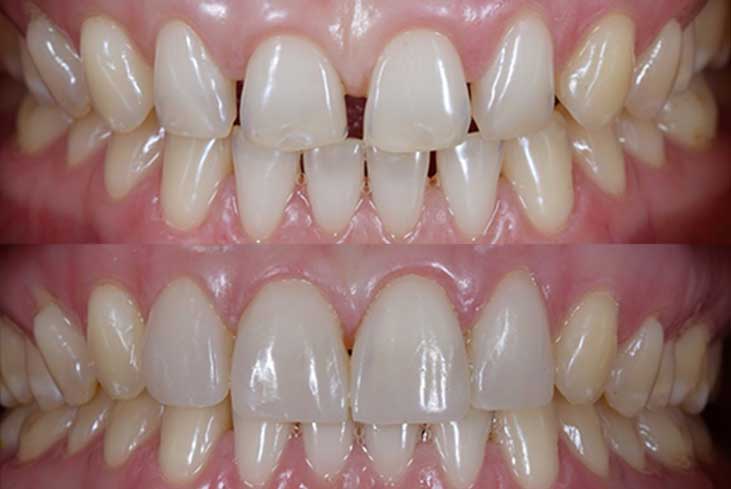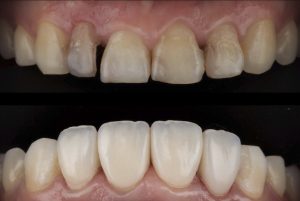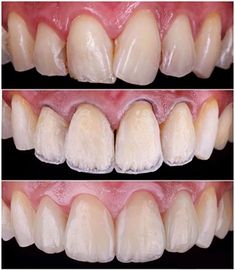
Have you heard about veneers? What about Hollywood smile?
Well, if you have not heard or if you heard but you want to know a bit more about it, read this article carefully.

Veneers are thin caps placed at the visible portion of the teeth and that became very popular among Hollywood stars. Not all the veneers are designed with Hollywood features (symmetric teeth with extremely white and even shade) and they can be done out of different types of material.
Ceramics are the most commonly used and traditional materials and can be produced in different ways from old fashion prosthesis labs or high tech computer assisted systems. This kind of material requires in general a tooth mechanical preparation where some of the tooth structure is worn out, followed by an impression or scan of the patient’s teeth, which is then forwarded to a lab for models and finally restoration manufacturing. The restorations indirectly produced are then cemented over the patients’ teeth.
Composites are on the other hand biocompatible materials which have evolved very much over the last decade. With unique properties that mimetic teeth mechanical and optical behaviour can reproduce with high accuracy patients’ teeth providing cosmetics and function. These materials rely on acid treatment of the tooth surface followed by bonding to stick to the teeth directly dismissing the need for third party laboratory work.
Both materials have pros and cons and this way the advice from a qualified dentist is paramount to choose which material is best for you. Multiple factors must be taken into consideration before proceeding with any cosmetic treatment like bruxism (clenching or grinding), patient’s age, oral hygiene habits, gingival health and more.
The composites are extremely conservative as in general, no teeth structure is lost by preoperative preparation, the material is biocompatible, resistant and provides excellent aesthetics. The procedure is straightforward and can be finalized in one session. The downside of this approach is the chair time and technique are very sensible to the operator’s technique mastering.
The ceramics on the other hand provide also provide excellent aesthetic results and have more predictable results as before cementation patients can try in the pieces. Operator skills are also a must and in most cases, teeth preparation is needed and tooth structure is consequently lost.
 Considering what has been said it is very clear that looking for a highly qualified professional to assess your case and show the most suitable options for you is fundamental. Knowledge is the key so if you have any queries feel free to consult your trusted dentist.
Considering what has been said it is very clear that looking for a highly qualified professional to assess your case and show the most suitable options for you is fundamental. Knowledge is the key so if you have any queries feel free to consult your trusted dentist.